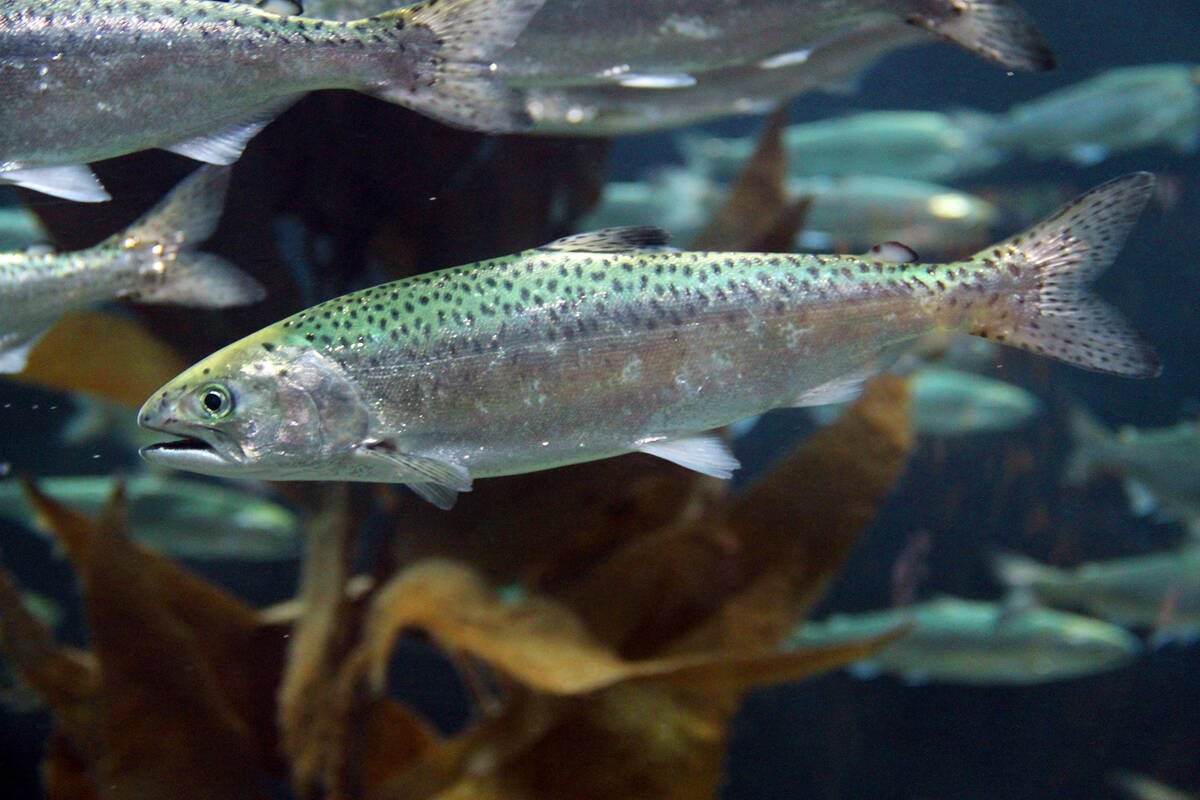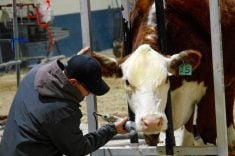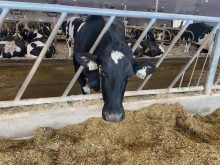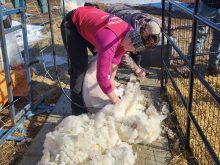Producers delivered 450 sheep and goats to the Oct. 5 sale at Winnipeg Livestock Auction. There was no indication that the producers had any concerns about lower prices caused by stock left over from earlier sales.
Feeder lambs and ewes dominated the sale. The young meat goat kids were of show quality and drew the attention of the buyers. The markets are indicating that producers are and have been well stocked to supply the buyers.
The buyers were still purchasing the various ewes, but cull prices were seriously affected by the low bidding. There appeared to be no price differences between wool and hair ewes at this sale. The extreme woolly ewes were slightly affected by the lower bidding.
Read Also

Canadian aquaculture wants farming treatment
Canada’s fish farms want to switch federal portfolios to be under Agriculture and Agri-Food Canada’s eye rather than Fisheries and Oceans Canada’s thumb and be able to grow production.
The weight of the rams did not have a major effect on prices, which ranged from $0.72 to $0.87 per pound.
Under the heavyweight classification, a group of six 112-pound lambs brought $201.60 ($1.80 per pound). The 150-pound Cheviot-cross lamb brought $1.22.
There was high interest in bidding for the market lambs. The price ranged from $1.77 to $1.84 per pound.
There was less interest in hair lambs — not necessarily as culls, just lower bidding. The three 105-pound Katahdin-cross lambs brought $1.05 per pound.
Feeder lambs had strong bidding, with good selection. There appeared to be no price difference between wool and hair lambs. The price ranged from $1.72 to $1.88 per pound.
The bidding pattern continued for the 70-plus-pound lambs. The price ranged from $1.71 to $1.87 per pound. An exception was a group of seven 78-pound Katahdin-cross lambs which brought $1.38 per pound.
The 60-plus-pound lambs brought more interest with a price range of $1.80 to $1.86 per pound. Two 65-pound Rideau-cross lambs may have showed a case of worms, causing a lower price of $1.60 per pound.
The 50-plus-pound lambs brought similar price range from $1.82 to $1.92 per pound. A 50-pound Dorper-cross lamb brought $1.43 per pound.
There was less demand for the 40-plus-pound lambs with no price difference between wool and hair types.
The 12 39-pound Katahdin-cross lambs appeared to require some conditioning to gain more interest from the buyers.
Goats
There appeared to be demand for goat does, which were represented by the Alpine breed at this sale. The bidding remained fairly constant between meat and dairy does. Local buyers dominated the bidding for the dairy goat does.
The Boer-cross bucks had nice frames and structures, causing some strong bidding. The 135-pound Alpine-cross goat buck was slightly lower in bidding than the Boer-cross goat bucks.
There was a good selection of goat kids at this sale. The Boer-cross goat kids of various weights, had quality. Bidding reflected the good quality for the Boer-cross kids.
















